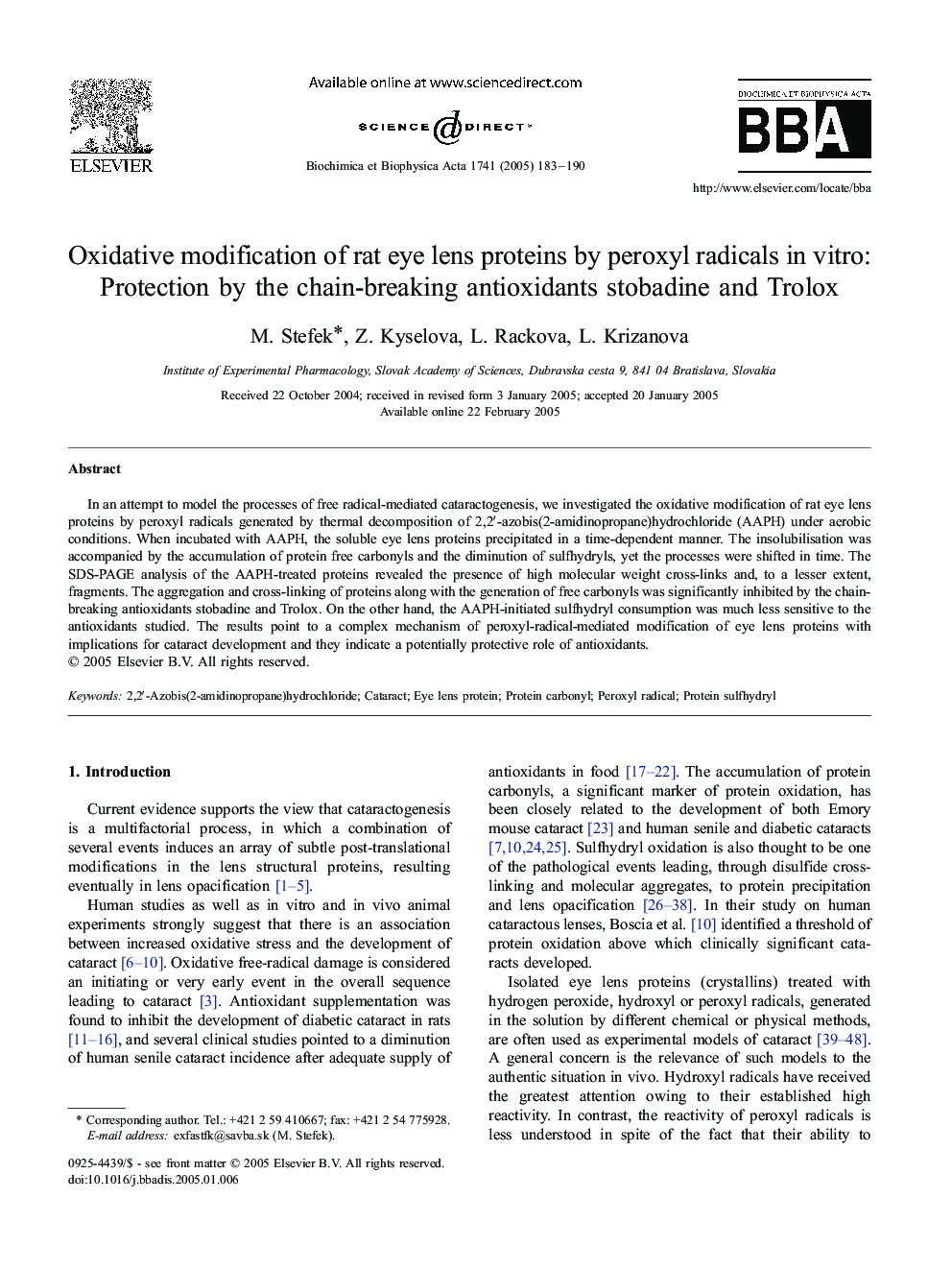| Article ID | Journal | Published Year | Pages | File Type |
|---|---|---|---|---|
| 9879435 | Biochimica et Biophysica Acta (BBA) - Molecular Basis of Disease | 2005 | 8 Pages |
Abstract
In an attempt to model the processes of free radical-mediated cataractogenesis, we investigated the oxidative modification of rat eye lens proteins by peroxyl radicals generated by thermal decomposition of 2,2â²-azobis(2-amidinopropane)hydrochloride (AAPH) under aerobic conditions. When incubated with AAPH, the soluble eye lens proteins precipitated in a time-dependent manner. The insolubilisation was accompanied by the accumulation of protein free carbonyls and the diminution of sulfhydryls, yet the processes were shifted in time. The SDS-PAGE analysis of the AAPH-treated proteins revealed the presence of high molecular weight cross-links and, to a lesser extent, fragments. The aggregation and cross-linking of proteins along with the generation of free carbonyls was significantly inhibited by the chain-breaking antioxidants stobadine and Trolox. On the other hand, the AAPH-initiated sulfhydryl consumption was much less sensitive to the antioxidants studied. The results point to a complex mechanism of peroxyl-radical-mediated modification of eye lens proteins with implications for cataract development and they indicate a potentially protective role of antioxidants.
Keywords
Related Topics
Life Sciences
Biochemistry, Genetics and Molecular Biology
Ageing
Authors
M. Stefek, Z. Kyselova, L. Rackova, L. Krizanova,
